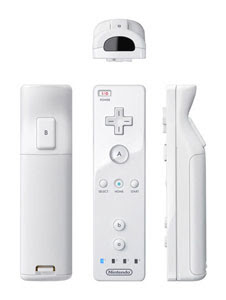Iv'e created a new column for my blog work and shall name it All things bright and Multimedia
I'll create posts now and again about various Multimeda related topics that i shall research and share with you. SO i get to know more about aspects of Multimedia and share it with you.
So without further adu i shall post my first Blog and it's about the NEW Nintendo Wii (Mainly the remote).
So without further adu i shall post my first Blog and it's about the NEW Nintendo Wii (Mainly the remote).
Unless you have been on mars for a while you will have heard of the new game console ‘Nintendo Wii’. Previously known as Revolution and the successor to the Nintendo GameCube. Mentioned in 2004 and a prototype was shown in 2005 at the Tokyo Game Show. The feature which makes this console so sort after is it’s wireless controller.
The contoller works by using two things; Infa Red and an accelerometer.

Infa Red - communicates with the consoles sensor bar and that detects where the remote is pointing to.
An accelerometer - An instrument for measuring acceleration, detecting and measuring vibrations, or for measuring acceleration due to gravity. The Wii remote for the contains accelerometers for measuring movement and tilt to complement its pointer functionality. However when playing a game the gamer must not be too far or too close or the signal will be lost.
An accelerometer - An instrument for measuring acceleration, detecting and measuring vibrations, or for measuring acceleration due to gravity. The Wii remote for the contains accelerometers for measuring movement and tilt to complement its pointer functionality. However when playing a game the gamer must not be too far or too close or the signal will be lost.
With this a gamer can not only just be apart of a game with various flashing in-depth graphics or use a steering wheel or gun to get closer to the action but now actually move about and feel more of the character in the game. Top Notch!

